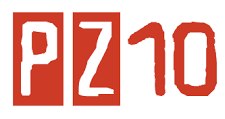Overhead Cost Allocation
Costs incurred by cost centers are classified into two types
a) Direct Costsb) Indirect Costs
Costs which can be traced to the finished products manufactured are called ‘direct costs’. In other words a relationship between costs and finished products manufactured can be established.
Costs which cannot be traced to the finished products manufactured are called ‘indirect costs’. They are also known as ‘Overheads’. This implies overheads can only be apportioned to the finished products.
Example: A unit manufactures two products – Leather shoes & Leather wallets
Material (Leather) used for both the products is traceable to them individually. However, expenditure of a common machine used in making both the products cannot be traceable to them.
Therefore in the above case ‘Material’ would be a direct cost and ‘Machine expenses’ would be indirect cost.
Importance of overhead allocation
Total cost of product constitutes Direct Material, Direct Labor & Overheads. Direct Material and Direct Labor are directly traceable to the products manufactured. Accuracy of product cost computation depends on accurate distribution of overheads to products. Inaccuracies would lead to incorrect decisions – especially the pricing decisions.
However, the method of overhead distribution should be chosen by considering time and cost factors in addition to accuracy.
Traditional Distribution
Traditionally overhead apportionment to products was made in the following three step approach
I) Primary Distribution (Allocation & Apportionment)
II) Secondary Distribution (Re-apportionment)
III) Absorption
If you own a manufacturing company, your small business incurs a
number of expenses other than direct labor. You must allocate those
expenses to the product you make, so you know the true cost of
manufacturing the item. How you allocate those expenses depends on how
you categorize them. You must also decide whether you want to create a
report for external purposes, such as reporting to the IRS, or for
internal purposes, such as a budget meeting.
Variable Costs
List all the amounts for your variable costs in manufacturing your
product. Variable costs include direct labor, raw materials, supplies,
shipping expenses and production bonuses. These are called variable
because they rise or fall with the number of products you produce.
Always include variable expenses as part of your product costs.
Fixed Costs
You incur fixed costs no matter how many products you produce.
Fixed costs include rent or mortgage payments for production facilities,
insurance, property taxes, equipment lease payments and depreciation on
equipment you own.
Absorption Costing Method
Under the absorption costing method, you can allocate your fixed
overhead costs to products by determining how many of those products you
sold. For example, you may find that you sold 80 percent of the
products you manufactured. Assign 80 percent of your fixed overhead
expenses to the cost of making those products. Use this method when
making external reports to the IRS or any other entity outside of your
business. The IRS will not accept any costing method other than the
absorption costing method.
Variable Costing Method
Use the variable costing method for your internal reports. This
method allocates all fixed overhead costs as part of your product
expense, no matter how many products you sold. If you sold 80 percent of
your products in any given time period, allocate 100 percent of your
fixed overhead expenses to those products. This gives you a clear
picture of which expenses you must keep up with no matter how much you
sell. Your variable costing figure can be useful for budget and sales
meetings.
Per Unit Cost
If you want to find out the total expense you have in each
individual product, add your variable and fixed costs together and
divide by the number of products you manufactured. For example, if your
total expenses were $250,000 and you made 1 million products, divide
250,000 by 1,000,000 and you get .25. This means your products cost 25
cents each to make.


